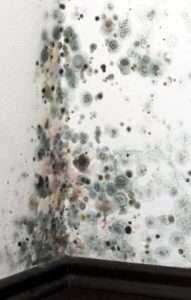
KNOW THE SYMPTOMS
Is Black Mold Hiding in Your Mineola, TX Property? Signs to Detect
Black mold doesn’t always announce its presence with obvious, sprawling colonies. For property owners in Mineola, TX, recognizing its more subtle cues is vital for early intervention. Disregarding these initial warnings can lead to escalated property damage and significant health concerns. If you detect any of the following in your Mineola home or business, it’s a strong signal to contact professionals for a specialized black mold inspection.
Critical Indicators of Black Mold in Mineola:
- Persistent Earthy Odor: A consistent, damp, or distinctly musty smell, particularly noticeable in areas with poor ventilation or a history of moisture, is a leading indicator of hidden black mold in Mineola. This strong odor often suggests active microbial growth, even if no visible mold is present.
- Unusual Dark Streaks or Spots: Keep an eye out for any mysterious dark-colored patches, typically black or greenish-black, appearing on walls, ceilings, or around window frames in your Mineola property. These visual cues can indicate active black mold colonies, sometimes even behind visible surfaces.
- Paint or Material Deterioration: If paint is chipping, bubbling, or peeling, or if wallpaper is separating from the walls, it strongly suggests hidden moisture. These conditions create a prime, concealed environment for black mold to develop in your Mineola residence or commercial space.
- Increased Respiratory or Allergy Complaints: Should individuals in your Mineola building experience a noticeable increase in allergy-like symptoms (e.g., persistent coughing, sneezing, nasal congestion), asthma flare-ups, or unexplained headaches primarily when indoors, airborne black mold spores could be the cause.
Prior Water Damage Incidents: Any property in Mineola with a history of water-related incidents—such as past flooding, burst pipes, or persistent condensation—is at a significantly higher risk for black mold growth. Even if water has dried, the lingering dampness can foster hidden mold development.
Need help? Call us








